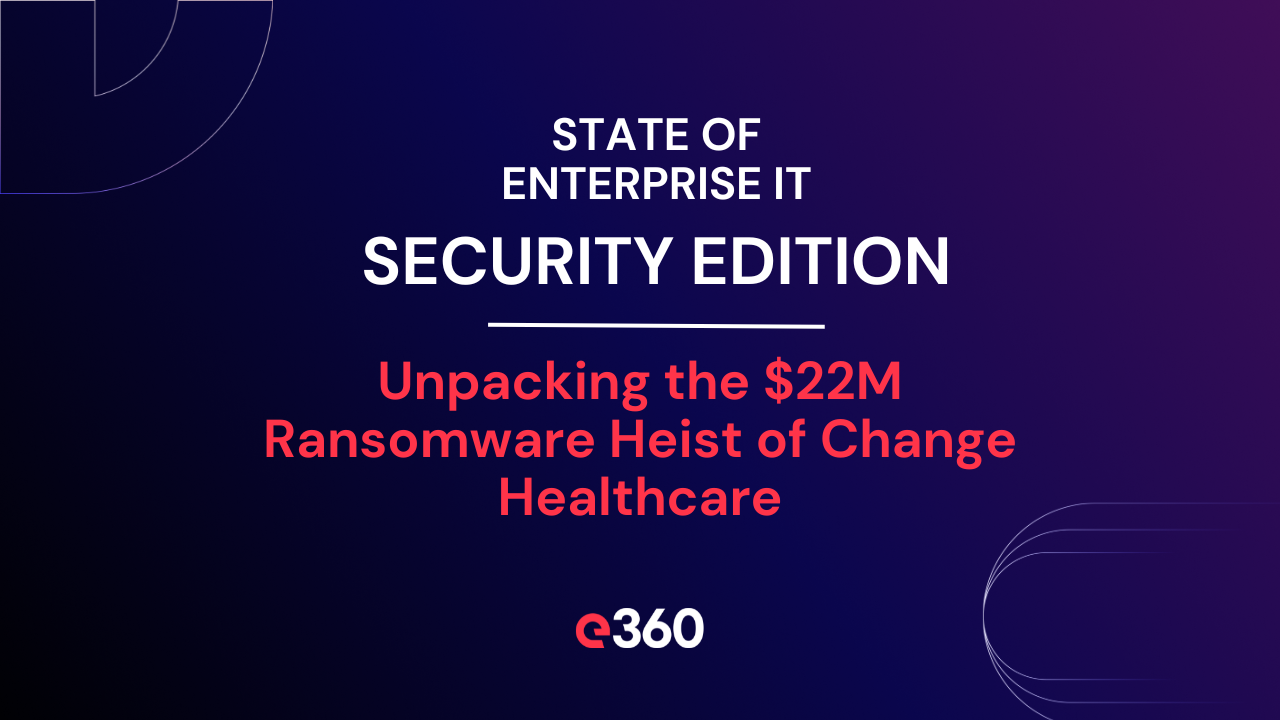Today’s healthcare stakeholders are innovating in ways, and at a pace, we have not seen before. This is driven by various factors including ongoing cost pressures, regulatory requirements, and increased consumer demands; and is ultimately fueled by an increase in connectivity and access to data.
The COVID-19 pandemic has had a compounding effect as providers experienced revenue loss due to limits on elective procedures, and the shift to remote work and care necessitated technology investments and security enhancements to maintain operations in a virtual environment.
In this paper we discuss some of the trends in the healthcare ecosystem, share ways in which Entisys360 can help address client challenges, and initiate a discussion on where healthcare is headed. This does not cover all the trends and innovations in the industry – that is too vast and dynamic to capture in a single paper – rather it reviews some of the major shifts guiding elements of the healthcare system we are serving. We invite you to contact us to continue the discussion.
Traditionally, health systems have been the ones to shape the way care is provided. In today’s environment, however, externally derived factors such as changes in reimbursement, regulations, and customer demands, are forcing health systems to respond and adapt the way they operate.
Shift in care setting. Cost pressures on providers, as well as patient preferences, are shifting healthcare provision out of the traditional hospital setting. From a cost standpoint, the increase in value-based contracts that reward on outcome over volume, incentivizes providers to find lower cost healthcare settings. Settings such as outpatient and ambulatory care centers allow providers to deliver procedures such as knee or hip replacement at 30-40% less than the cost of an in-patient facility.1
From a consumer preference standpoint, patients are increasingly seeking more personalized and comfortable healthcare. Concierge and spa-like services offer clinical care in modern and luxurious settings outside of the traditional hospital. In addition to appealing to consumer demands, these types of services are also creating new revenue streams for health systems. Recently, several new companies have emerged that offer healthcare services in the comfort and convenience of a patient’s own home. Through companies such as Ready Responders and Heal, patients use digital apps to request clinical care at a time that is convenient for them, similar to the ease of scheduling a ride through Uber.2 Care is then provided either virtually or through an in-home visit depending on what the patient prefers.
The COVID-19 pandemic has accelerated this trend. With healthcare facilities shut down for non-essential in-person care, the industry was forced to shift to virtual care solutions that enabled healthcare providers to visit with patients in the safety and comfort of their homes. Patients and providers alike have reported positive experiences with virtual care as well as the desire for continued expansion of telehealth models with enhanced capabilities.3,4
Continued evolution of regulatory and compliance requirements. Health systems face a range of regulatory and compliance requirements (see Image 1). While these standards were established to protect public health, promote the delivery of high-quality care, and enhance patient privacy, they have also placed a significant administrative toll on healthcare providers in order to comply. Healthcare entities must not only stay up-to-date on the constantly changing and evolving regulations but must also invest sizable resources to acquire, and implement, the technologies and processes necessary to meet requirements. A recent AHA report found that every patient admitted to the hospital, resulted in $1,200 of associated regulatory costs.5



